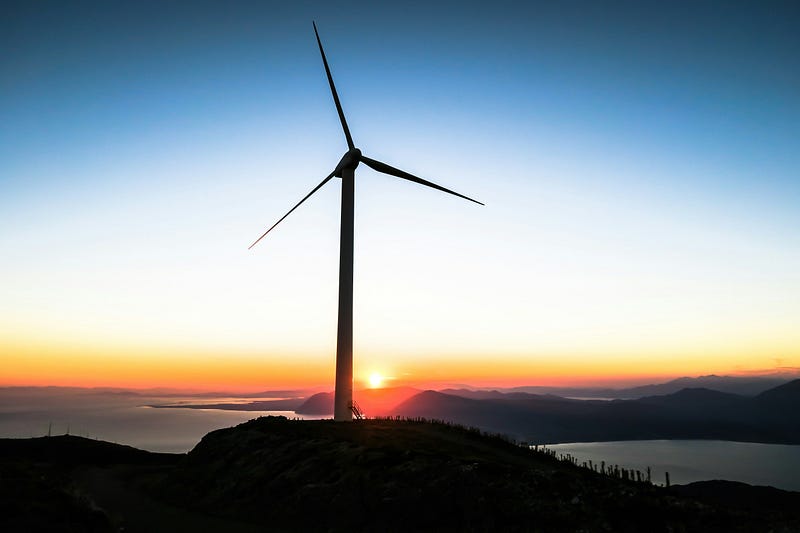The U.S. is Poised for a Sustainable Energy Revolution
Written on
Overview of the U.S. Energy Landscape
The United States has often been seen as resistant to the shift towards sustainable energy. Despite its reputation as a leader in technological innovation, the country continues to rely on outdated energy sources such as coal and natural gas. This reliance can be attributed to various factors, including the desire to maintain global dominance, flaws within the capitalist framework, and the politicization of environmental policies. However, the current landscape indicates that there are no significant barriers preventing the U.S. from achieving net-zero emissions.
Recent findings from Lazard illustrate the cost-effectiveness of different energy sources in the U.S. Notably, onshore wind energy is effectively free when accounting for subsidies, and even without them, it remains remarkably affordable at $27 per MWh. Similarly, utility-scale solar energy is priced at $6 per MWh with subsidies and $29 per MWh without. While these figures do not factor in energy storage, they still highlight the low costs associated with renewables compared to fossil fuels, which cost $45 per MWh for gas and $69 per MWh for coal.
The Need for Energy Storage: A Misconception
Some critics argue that renewables necessitate energy storage to be viable. However, this perspective is misguided, especially for a vast nation like the U.S. A recent study indicates that the continental U.S. could operate entirely on wind and solar energy without requiring grid-level storage. By strategically deploying solar panels and wind turbines across the country, it becomes feasible to generate sufficient energy without the high costs associated with battery storage.
This innovative approach would only require a mere 0.84% of U.S. land, significantly less than the 1.3% currently utilized by the fossil fuel industry. Moreover, transitioning to such an energy grid could lead to a 63% reduction in per capita energy costs compared to the present system. The advent of new, ultra-efficient power lines, like those developed by Xlinks, further supports this transition.
The Economic Viability of Renewables
When implemented effectively, renewables can be at least 40% more economical than the cheapest fossil fuel options, even in the absence of subsidies. Furthermore, as technology advances, the cost of energy storage is expected to decrease significantly. A study conducted a few years back suggested that for a renewable energy grid to match the price of current fossil fuel systems, battery costs would need to drop to around $20 per kWh—approximately six times cheaper than previous rates. While the cost of renewable energy has plummeted, advancements in battery technology have been incremental. However, companies like Form Energy are now producing batteries that meet this crucial threshold.
Once these batteries are widely adopted, the price of stored renewable energy is poised to decline dramatically. With renewables already cheaper than fossil fuels, a fully renewable energy grid using these advanced storage solutions will ultimately yield lower energy costs than traditional fossil fuel systems.
Profitability of Renewable Energy
Contrary to the belief that renewables are less profitable than fossil fuels, data from 2020 shows that renewable investments yielded returns of 200%, while fossil fuel plants provided only 97%. This trend of higher profitability for renewables continues, reinforcing the argument for their swift adoption.
In conclusion, renewable energy in the U.S. is not only significantly more affordable than fossil fuel energy—even without subsidies—but the technology to transition to a fully renewable energy system is available and commercially viable. Moreover, the financial benefits of renewable energy far exceed those of fossil fuels.
Given this context, one must question why the U.S. is not more aggressively pursuing renewable energy solutions. If the U.S. operated as a truly free-market capitalist society, it would logically gravitate towards this more advantageous energy model. The sluggish pace of renewable adoption reflects deeper systemic issues that may be just as concerning as climate change itself.
As we move forward, awareness and support for sustainable practices are crucial. If you appreciate content like this and want to see more, consider following my project, Planet Earth & Beyond.
Sources: Oil Price, Will Lockett, Planet Earth & Beyond, Forbes
Chapter 1: The Path to Net-Zero
Farming the Future: Livestock's Leap to Net Zero - This video explores innovative agricultural practices aiming to reduce carbon footprints in livestock production.
Section 1.1: The Economic Argument for Renewable Energy
Exploring the financial advantages of transitioning to renewable energy sources and the implications for investors and consumers alike.
Subsection 1.1.1: Visualizing the Future

Section 1.2: Overcoming Barriers to Adoption
Discussing the systemic obstacles preventing rapid adoption of renewable energy technologies in the U.S.
Chapter 2: The Future of Energy in America
Can America Reach Net-Zero Emissions? - This video delves into the challenges and opportunities facing the U.S. in its quest for sustainable energy solutions.